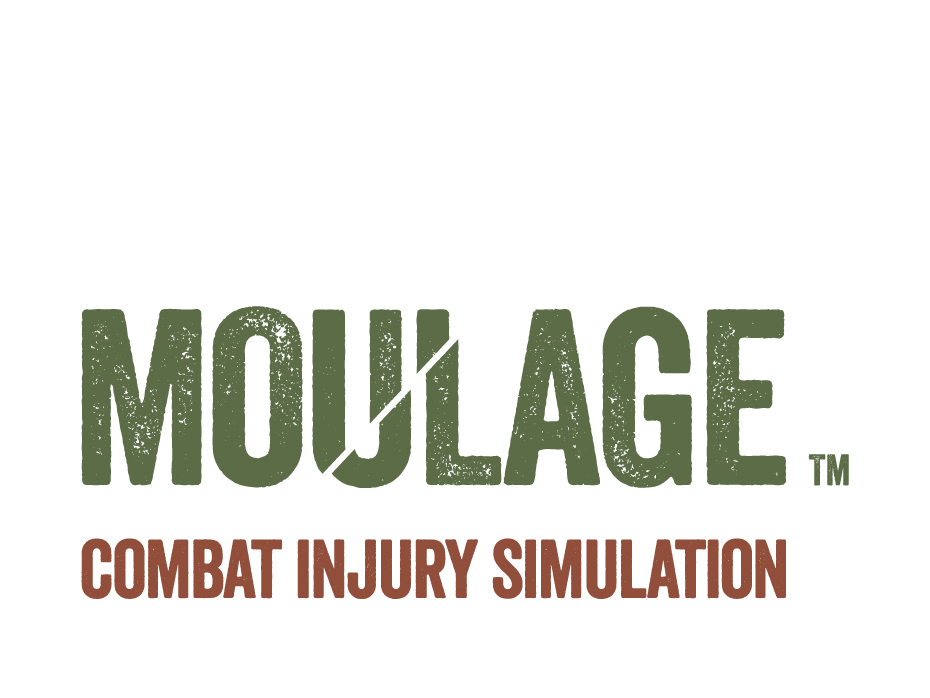Theatrical Blood Effects for Realistic Casualty Simulation: Part 2
High fidelity blood simulation is a pivotal component in creating true-to-life bleeding traumas for accurate response in training, so there are some physiology facts to keep in mind about it when you are planning blood loss in your scenarios. First of all, the human body contains roughly a gallon plus a quart of blood, about 168 ounces, and depending on the body size. Clinical symptoms of hypovolemia (shock due to blood loss) becomes apparent after about 20% or 1/5th of whole-blood volume has been compromised, so be aware of this detail when assigning large blood loss type of injuries. The amount of circulating blood in the body also drops if there is a loss of other body fluids through burns, excessive perspiration, or vomiting, etc. Internal hemorrhaging is blood loss into a body cavity or space as a result from acute trauma to the vascular system, and it can be severe enough to also cause hypovolemia. If you are planning to include internal bleeding as part of a multi-system trauma with external bleed out, then be aware of what is realistic and accurate in portraying overall blood loss. For instance, a broken pelvis will cause an internal blood loss of a little over a pint (16 oz) of blood, whereas an open femur fracture can represent over a quart and a half (or about 51 oz) of blood loss.
Blood color is also an important factor because there are two distinct types of blood that circulate throughout the body. Artery blood is oxygenated as it moves away from the heart and lungs, so it is a lighter or brighter red looking blood. Venous blood is a darker red hue because it is oxygen depleted and high in carbon dioxide as it travels back to the heart. You’ll need to determine how much theatrical blood of both colors will be needed to portray active bleeding through the flowing, dripping, or oozing from compromised veins and arteries portrayed, as well as any splashing, splattering, or smearing resulting from contact or an impact. Blood age is also a consideration, from the moment of impact to care and evacuation, such as a fresh bleeding wound or an older congealing wound. As blood begins to coagulate it thickens and gradually darkens as it dries, so it is important to be accurate to the way blood behaves and changes texture over a given time frame. Understand how human blood reacts on environmental debris so you can replicate these effects more accurately. For instance, blood pretty much remains pooled on pavement, but gravel or sand will absorb it.
Another important point to consider is how blood actually looks and displaces as it flows out of the body. Fresh artery blood is slightly more viscous than water, and has a translucent quality because it contains oxygenate matter that contributes to its color. Venous blood is more opaque because of the metabolic waste it carries. Blood flows unevenly and downward out of the body due to gravity, whether one is standing, sitting, or lying down. It also follows a path of least resistance around any body contours it comes in contact with, whether it is a small drip or a fast flow. It can also “splash back” due to force or impact. Choosing the correct theatrical blood characteristics, such as color, viscosity, texture, flow properties, “wet to dry” factors and even the ooze or coagulation quality are important considerations for optimal visual appearance, whether you are doing it for simulation training or a high definition film shoot. To this end, how you place the blood into the bleeding trauma is central to its performance, believability, and most importantly portraying its visual relevance in the amount of blood loss realistic to the injury. Never pour a theatrical blood product directly on a simulation from its original container unless it is pre-fitted with a dispenser spout, pipette, or some kind of regulating/squeeze valve that you can control or measure out as you apply it. Applying blood products under some kind of conservative control allows you to build it to what you need, because once it’s applied it’s pretty much done and in place, whether you applied too little or too much!
Keeping your actor role players or standardized patient simulators safe while employing stage bloods should always be a top priority. This means using theatrical blood formulations that are safe and flushable for sensitive use, such as on skin, in simulator tubing, blood capsules in the actor’s mouth, or dripping away from ears and noses. Formulations are generally classified as either cosmetic grade or food grade. Cosmetic grade is be used on skin but directed away from body orifices, and some types can also be used in blood pumping devices. Food grade means the theatrical blood is edible, however you should always check first with the manufacturer to make sure it contains safe ingestible ingredients. Caution: avoid using any food grade/sugar based blood simulation products if you are doing outdoor exercises outdoors for an extended length of time, especially if you have your casualties lying on the ground or in forested areas. Insects, such as bees, hornets, and ants are attracted to the scent and you don’t want your victim to become a real casualty due to a sting or bite!
This goes without saying, but in the interest of common sense and safety, NEVER consider using human or animal blood in any form on a role player or patient simulator! No further explanation needed, as everyone should consider this extremely unsafe practice, and for many obvious reasons. In part 3 we continue this series with the applications of the various kinds/brands of theatrical blood products that are best to use for specific needs, and deliver high fidelity results.

